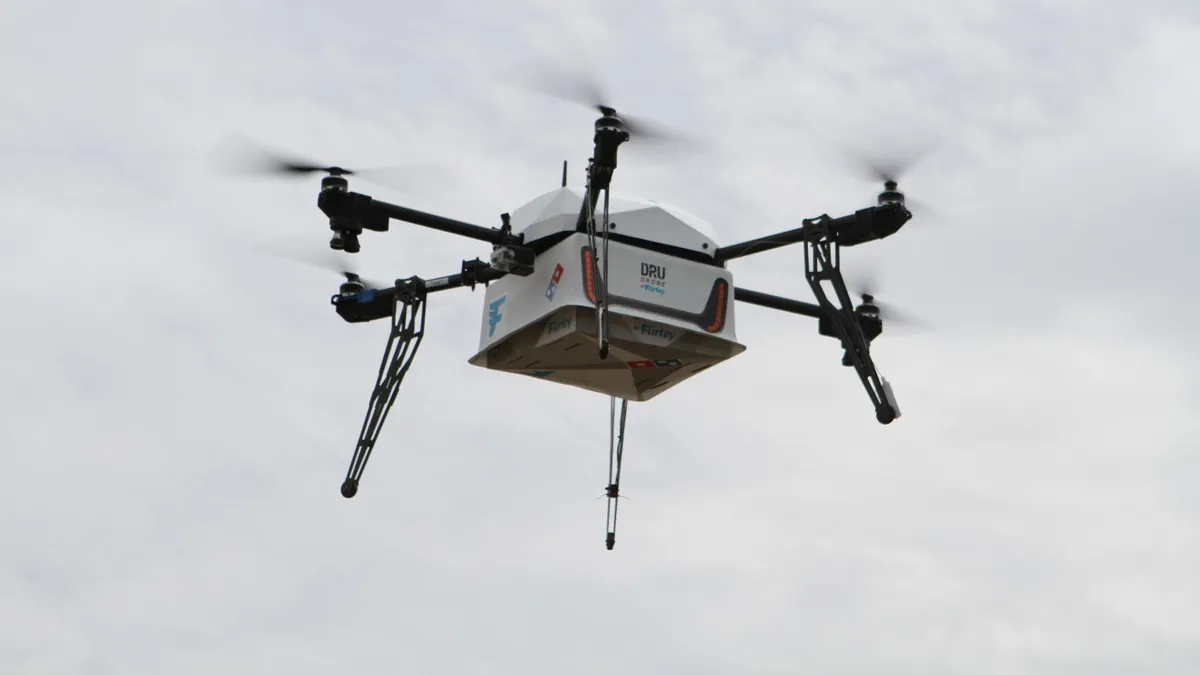Dive Brief:
- A report from the Lulea University of Technology in Sweden indicates that drones have a major role to play when it comes to inspecting and monitoring the state of the world’s infrastructure, according to Digital Trends.
- To carry out inspections of wind turbines, researchers used a system that combines “localization, path planning and mapping technology” in order to control and coordinate multiple drones flying at the same time in a relatively small area. After the drones collected data, the information was converted to 3D images so that inspectors could perform virtual inspections from the safety of the ground.
- Researchers said inspections can be performed faster and safer than the current process, which sees humans carry out those tasks for inspections on dams, wind turbines and other types of infrastructure.
Dive Insight:
Using drones to inspect infrastructure is something the Minnesota Department of Transportation has been testing for a few years. In 2015, the department started studying how drones could be used to inspect the state’s bridges, and, according to the state, drones and the associated technology have proven to be helpful and effective in improving the quality of those inspections, reducing costs and improving safety. In fact, the Minnesota DOT found that drone-assisted inspections saved an average of 40% off the cost of their traditional counterparts, mainly from savings on traffic control and equipment.
However, the department said there is a place for all forms of inspection — including those conducted by humans — and noted that drones are just another tool to add to the list.
A 2018 AASHTO (American Association of State Highway and Transportation Officials) survey found that 35 state DOTs were using drones, and not just for bridge inspections. Twenty agencies were using drones in their daily operations for such tasks as taking aerial photos of highway construction projects, surveying, public education and outreach, emergency response, pavement inspections, scientific research, traffic control and light-pole inspections.
Of course, contractors have also incorporated drones into their operations. The use of drones on construction sites, according to DroneDeploy, increased 240% from 2017 to 2018, with the most common activities being job progress tracking and communications. Contractors are also using drones for preconstruction and site planning, quality control, information gathering for bids and risk mitigation.
One high-profile undertaking that has taken advantage of drone technology is the Millennium Tower project in San Francisco. When there was concern that window cracks on the 36th floor of the building were a result of the leaning and settling that the building has experienced, drones were sent up to examine the windows and facade for evidence of additional cracks. This helped engineers determine that the cracks were a result of some exterior impact.











